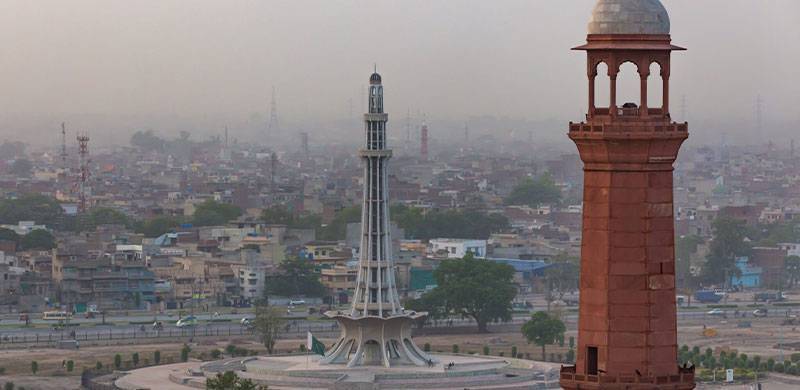
Urbanisation, as a development strategy, has become synonymous with progress. Globally, cities are expanding quickly, and half of the world's population already resides in cities. It is projected that by 2050, some two-thirds of the world's population will live in urban spaces. This rapid growth of cities promises an enchanting world of economic prosperity and improved quality of life. However, increased urbanisation and the resulting urban sprawl can lead to significant challenges, particularly in resource-stressed countries like Pakistan where the urban-rural divide is already significant.
Urbanisation is on the fast track in Pakistan with urban population rising from only 17% in 1951 to nearly 39% in 2024. Future projections indicate that over the next five years, nearly half of Pakistan's population will be living in large cities, causing them to expand outwards, a phenomenon known as "urban sprawl". The lion's share of the country's development budget already goes to large metropolitan cities like Karachi, Lahore and Rawalpindi/Islamabad. Further expansion of these cities would exacerbate the existing socio-economic disparities and the rural-urban divide. There is a dire need to develop a strategy that avoids overloading metropolitan cities and does not hinder the country's growth.
There is a huge discrepancy in the allocation of funds for developing urban and rural areas in Pakistan. For example, the federal budget for the financial year 2024-25 includes specific allocations for urban infrastructure improvements, including Rs5 billion for the Green Line Bus Rapid Transit project in Karachi and significant funds for urban housing and sanitation projects in Lahore and Islamabad. In contrast, rural areas received comparatively less funds, focused on agricultural support and basic rural infrastructure.
This urban-centric development model and the imbalance it creates compel residents of rural areas and smaller cities to migrate to these large urban centres in search of better employment opportunities, healthcare, education, and overall living standards. Consequently, cities become overcrowded, leading to sub-urbanisation, increased pressure on existing infrastructure, and environmental degradation.
A vicious, self-consuming circle.
Overcrowded cities face immense pressure to provide adequate services to all, often falling short due to the rapid influx of new residents. The housing market has become increasingly competitive, driving up the prices and forcing many to live in substandard conditions or informal settlements with limited access to basic amenities. While more abundant in urban areas, employment opportunities are also unable to keep pace with the growing population, leading to higher unemployment rates and underemployment.
Furthermore, rapid urban expansion has led to the destruction of green spaces, which have been replaced with concrete structures and the overuse of natural resources. Waste management systems are overwhelmed, leading to improper waste disposal, choked drains, and consequential health hazards. Additionally, the quality of air and water available for residents has significantly deteriorated, contributing to respiratory and waterborne diseases, which further diminish the quality of life in the city and add additional health stresses on the city's resources. The smog situation in Lahore and its surroundings is one clear example of the detrimental impacts of over-urbanisation.
Moreover, the strain on infrastructure, such as roads and public transport, has resulted in traffic congestion and longer commute times. The lack of efficient urban planning exacerbates these issues, making it challenging for cities to sustainably adapt to the needs of the growing population and indulging in expensive development projects to find solutions to invented problems. Without effective management, urbanisation can transform potential hubs of opportunity into hotbeds of socio-economic disparity, crime and environmental crises.
Investing in developing smaller cities and rural areas offers a sustainable solution to these issues. Incentivising business owners to invest in less-urbanised regions can stimulate local economies, generate employment opportunities within these geographic areas and improve their living standards, reducing the need for the population to migrate to large cities. This decentralised approach can, in turn, help reduce the migration pressure on major cities and promote balanced growth throughout the country. Developing smaller cities and rural areas can also lead to a more equitable distribution of resources and opportunities.
This is still viable for Pakistan, given that the majority of its 242 million population still lives in rural areas, 147.6 million to 93.88 million in urban areas.
To this end, it is essential to actively identify and evaluate the products produced in rural areas and the services offered by residents. By identifying these strengths, resources can be directed towards further developing these products and augmenting local businesses. This targeted support would empower local communities to thrive independently.
Pakistan's policymakers must also consider allocating a larger portion of the development budget to smaller cities and rural areas to promote equitable growth. This strategy not only addresses the challenges of urbanisation and urban sprawl but also fosters a more inclusive and prosperous society.

